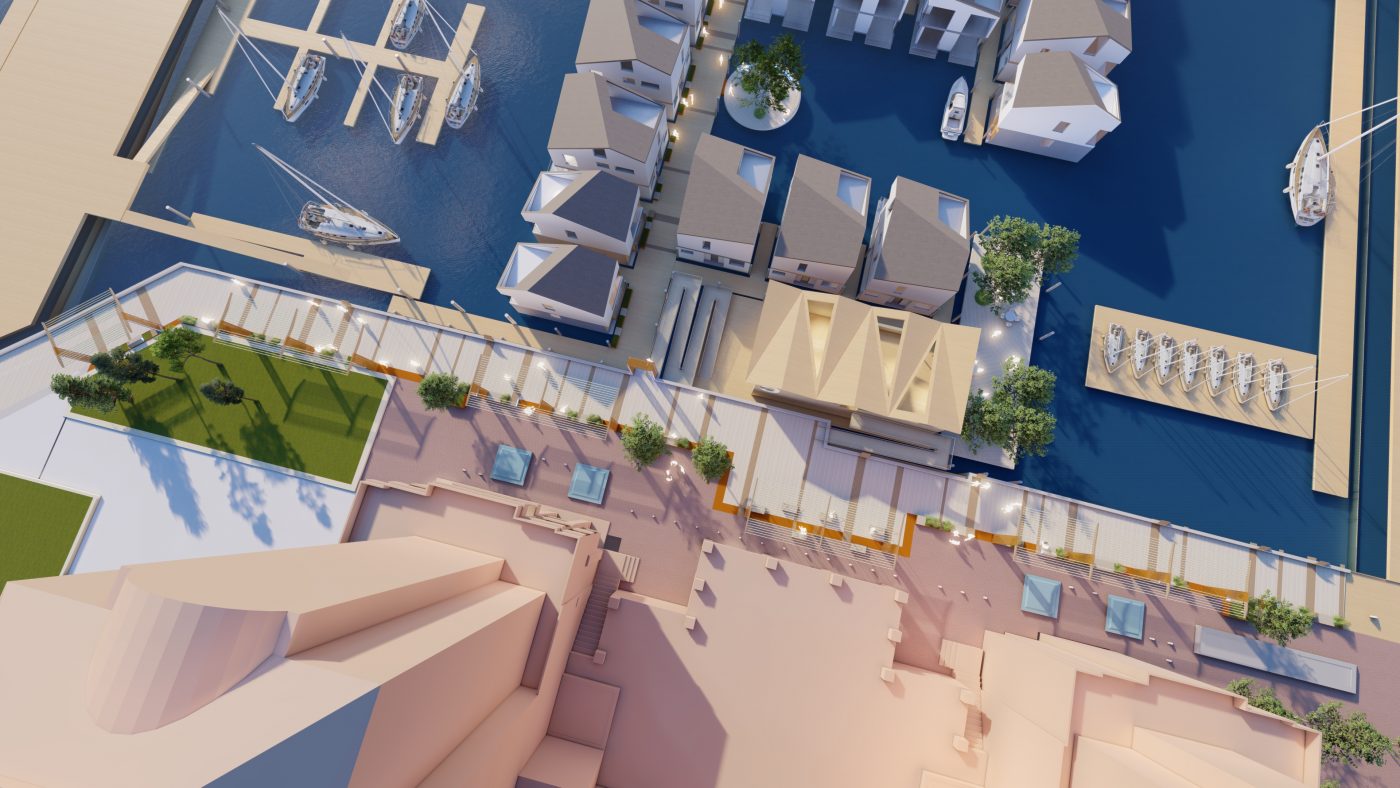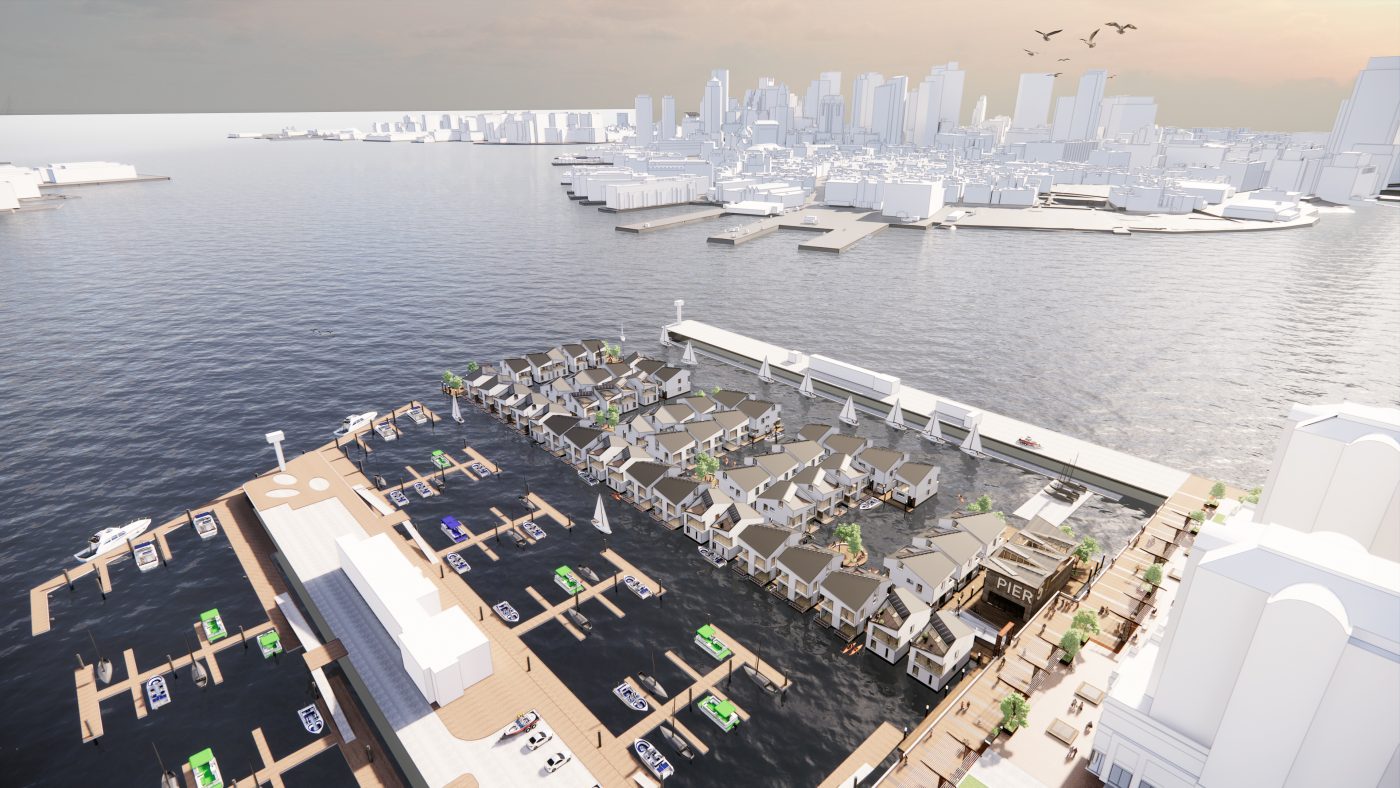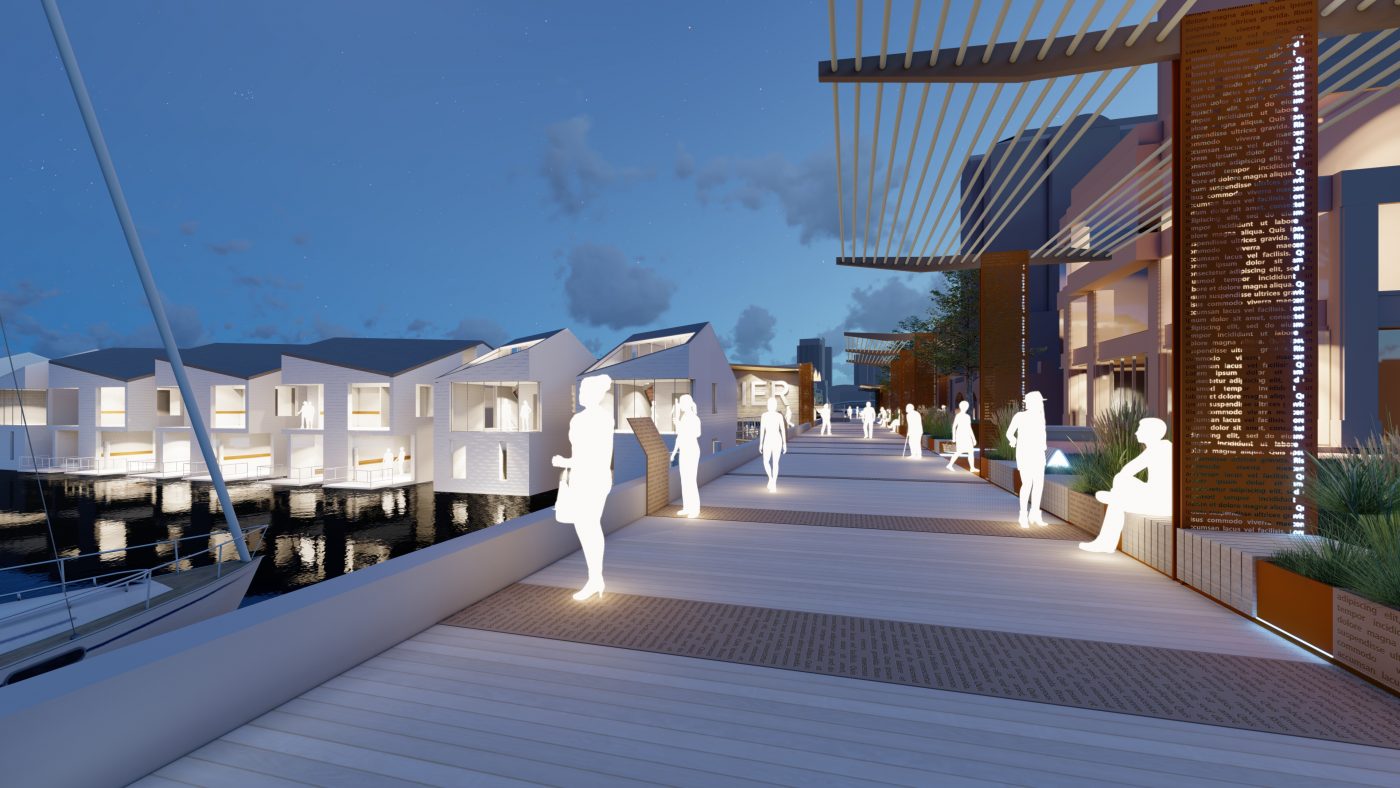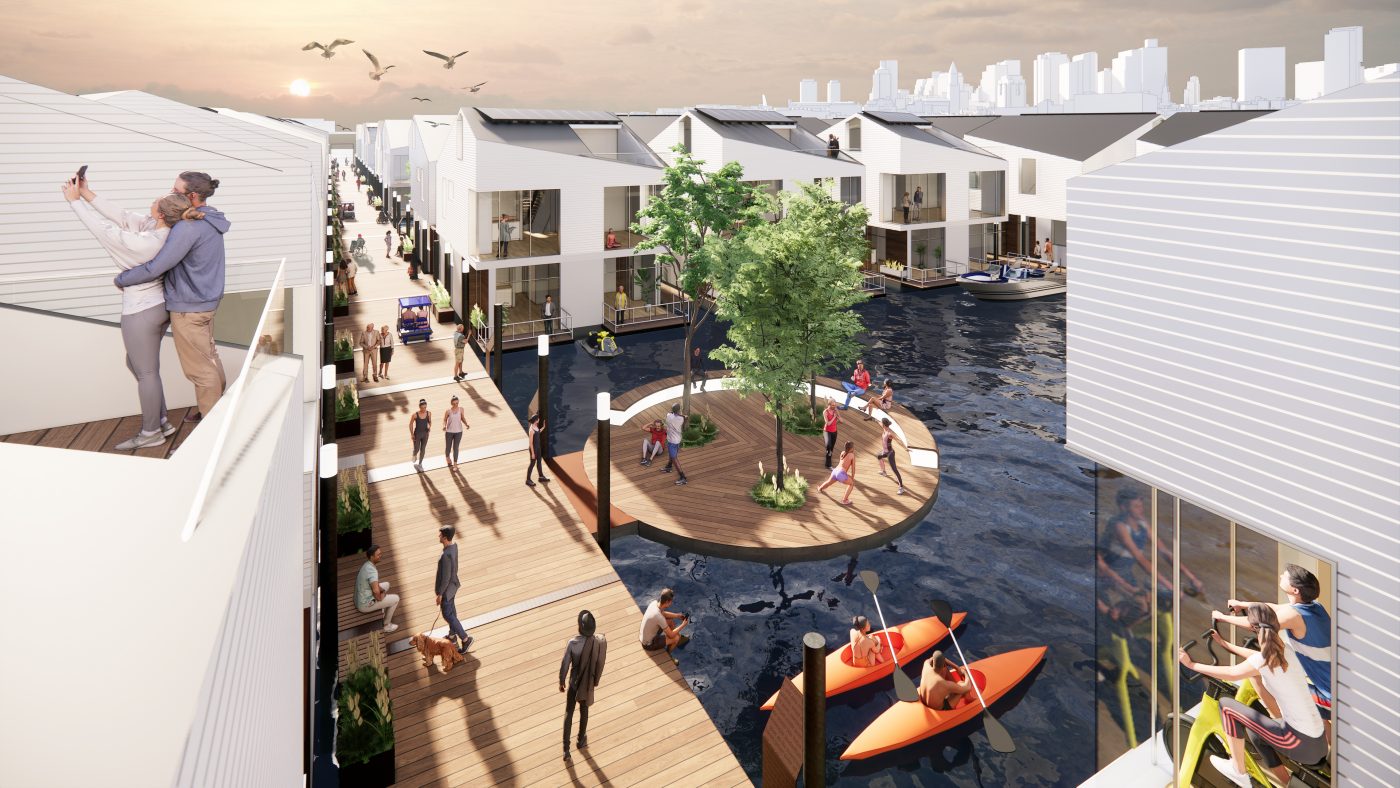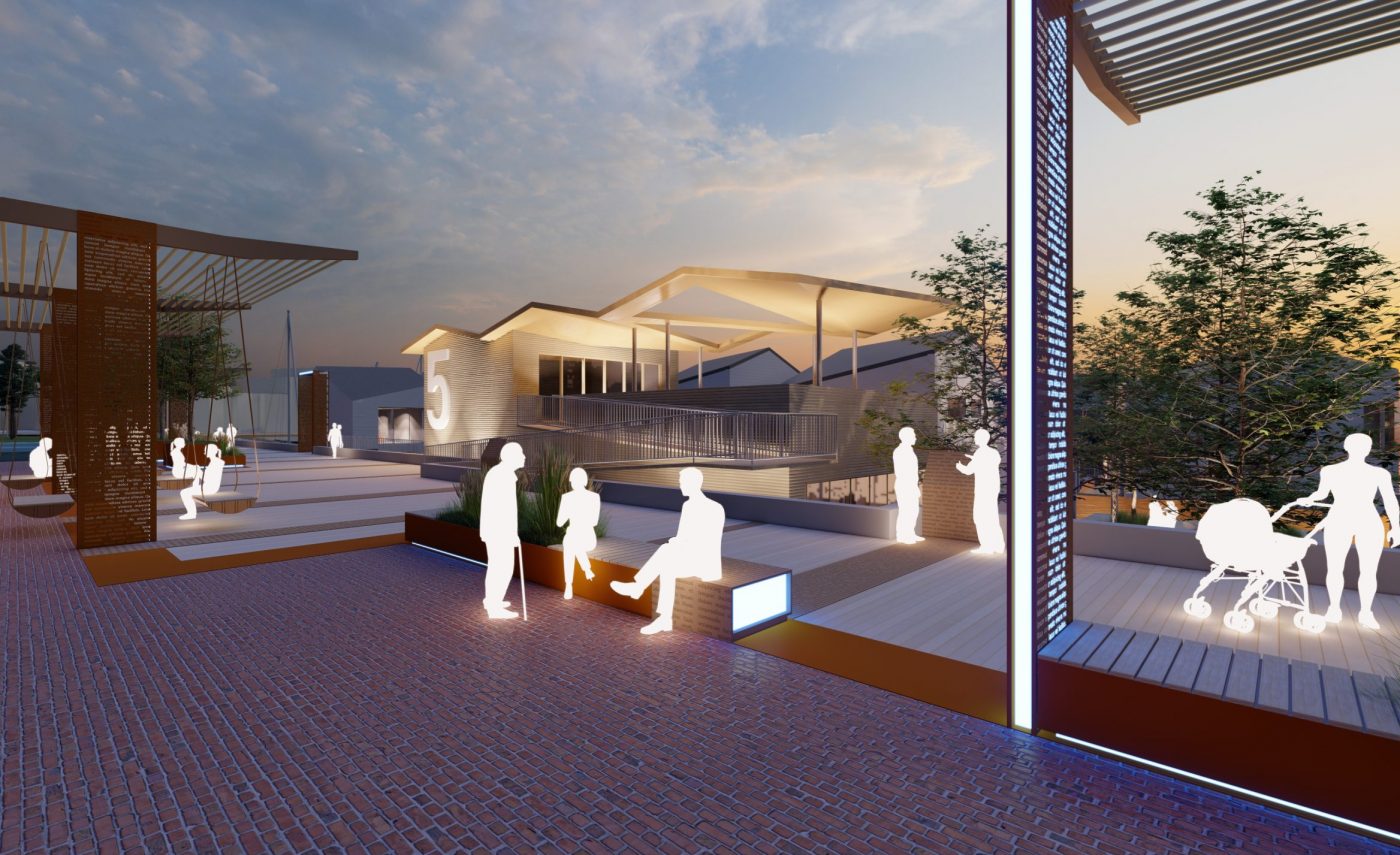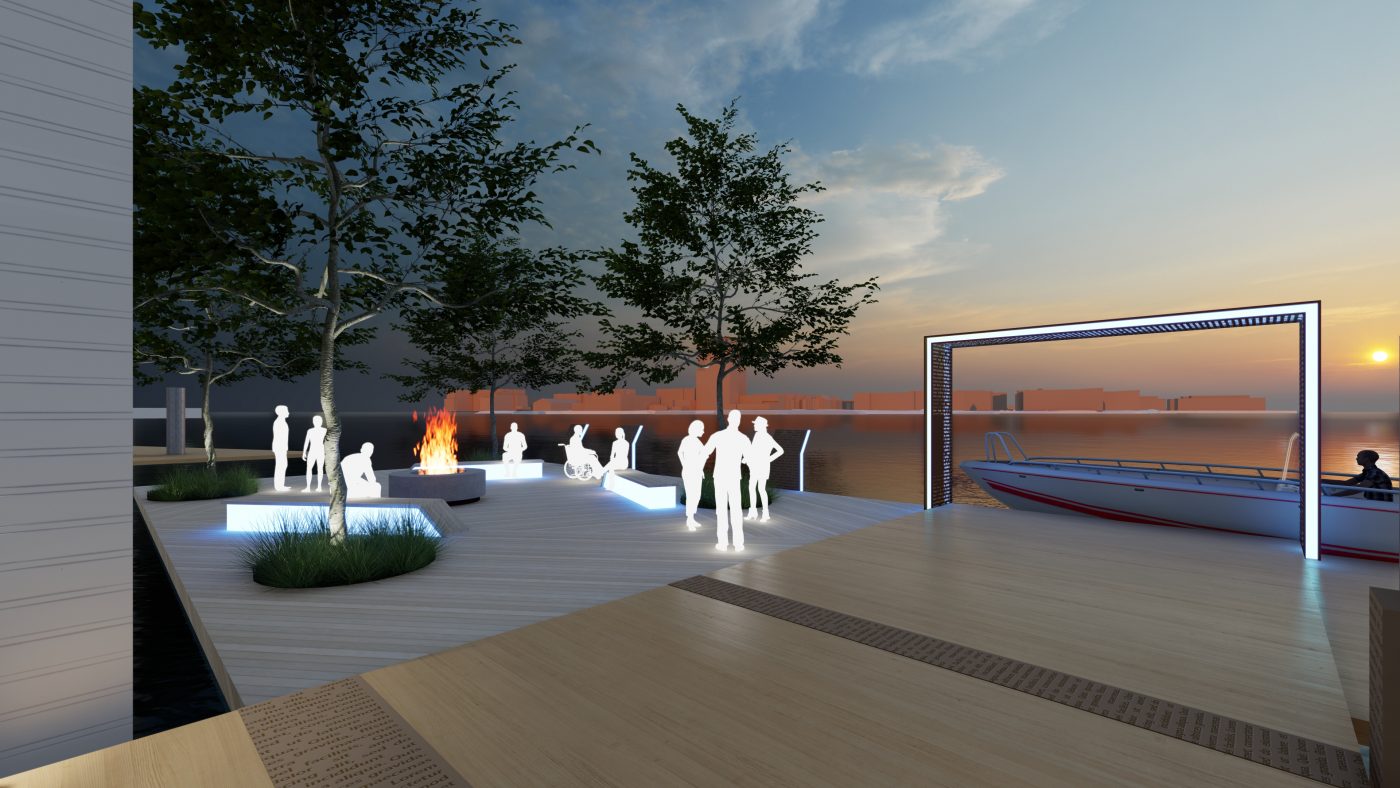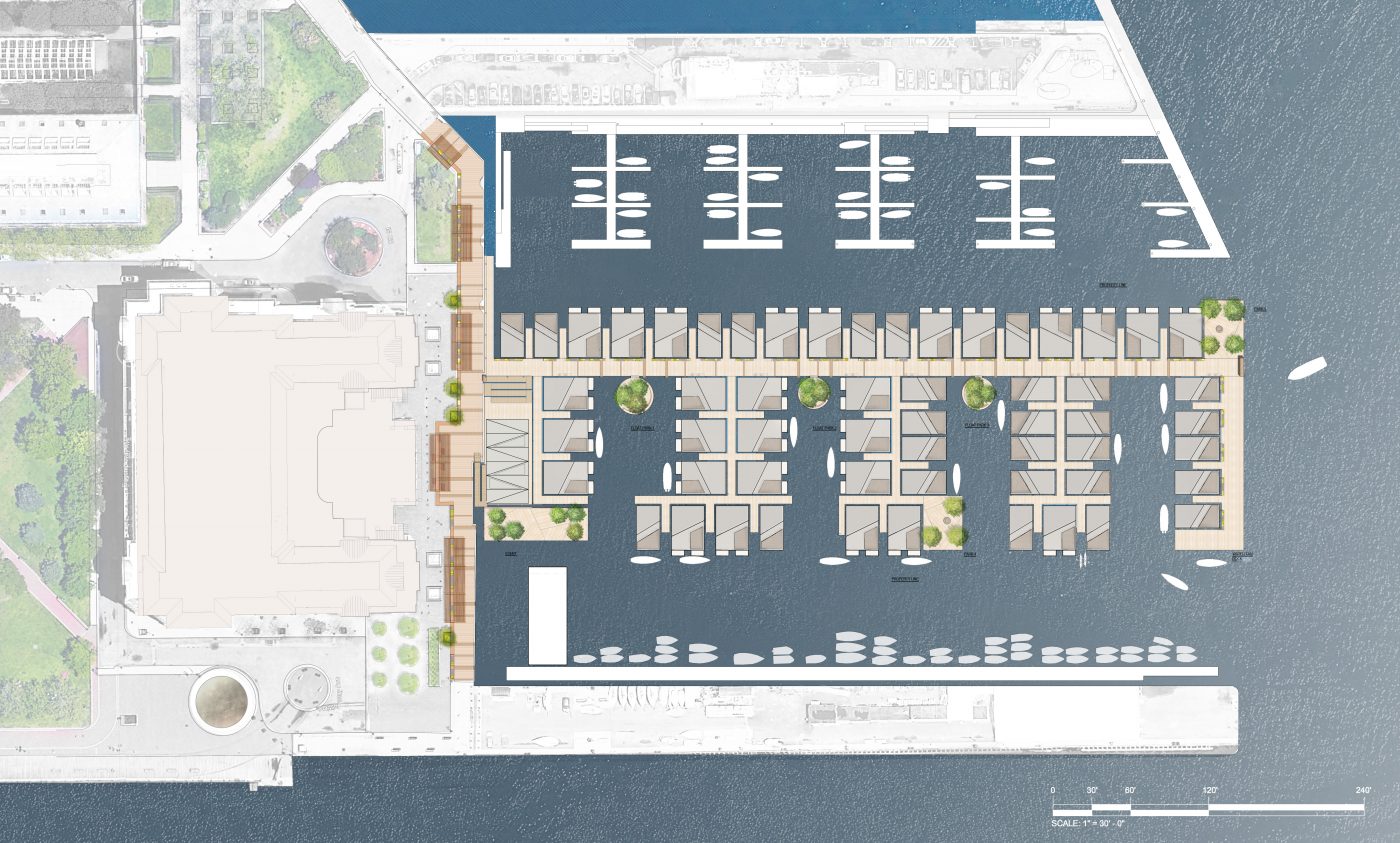NAVY BLUE
NAVY BLUE is a redevelopment proposal to the Boston Planning & Development Agency (BPDA) that aims to transform Charlestown Navy Yard’s Pier 5 into a resilient community of live-aboard vessels (“LVs”), fabricated and assembled at the East Boston Shipyard. The development team is led by the tri-venture of Charlestown Marina, Parent + Diamond, and Urban Spaces, along with the design team of Utile, Tise Design Associates, and landscape architecture firm Landworks Studio, Inc.. With the landward side Charlestown Navy Yard already identified as a high risk location, vulnerable to coastal flooding and storm surge, Navy Blue presents the city and region with an innovative and exciting blue print on how to develop resilient coastal communities at the waters edge.
The LV designs employ full steel monohull platforms, allowing for a deep draft and heavy displacement of the superstructure, resulting in enhanced stability. The platforms will be constructed by Blue Atlantic Fabricators LLC, a well regarded 25% women-owned tenant in the Shipyard. They will be epoxy coated and fitted with anodes to mitigate corrosion. Anticipated hauling for cleaning and repair will also occur at the Shipyard on an anticipated 20 year cycle.
The LVs will be classified as USCG certified vessels, and the requisite oversight during hull fabrication will be in place. Each platform will be equipped with an outboard mount to allow for movement when servicing, marina maintenance, or as other needs dictate. Superstructures will be highly energy efficient, with Passive House Certification being the ultimate goal. Large expanses of triple glazing will be complemented with a variety of composite siding systems. Interior finishes will be ultra-contemporary and include a wide variety of premium materials. All mechanical systems and appliances will be electric, including induction cooking, electric fireplaces and air source heat pumps for heat and AC. Roof water may be stored in the platform hulls and recycled for grey water usage. Solar panels will be fully integrated into roof designs.
Currently we envision as many as six basic prototypes, with living quarters sizes ranging from 530 sf to 2100 sf individual units. Each prototype is two levels, with a third level head house accessing a roof terrace in a variety of configurations. Detail design will commence immediately after designation. The suggested improvements to the stretch of HarborWalk from Pier 4 and Pier 6 will be designed in keeping with the overall HarborWalk design standards established by the City in collaboration with stakeholder groups. These will include interpretative panels and kiosks, as well as seating areas, landscaping, and viewing opportunities. Special provisions for people with disabilities will be provided, in recognition of Spaulding Rehabilitation Center’s adjacency and other recently improved sections of the HarborWalk.
The marina infrastructure will be constructed of materials similar to those used at Pier 6. Our current plan is to employ a 16’ wide platform/attenuator at the end of our dock system to mitigate wave action. All floating dockage will be secured with tubular steel pilings and framed with select Ipe decking on polyethylene floats. Dockage will be heated in the winter and will contain full utilities including water, forced main sewage, and electricity/internet/cable. LED light bollards will be Dark Sky compliant, and the “dockscape” will include benches, planters, bicycle racks, and other forms of traditional street furniture.
We have allocated a number of open air amenity areas for residents to gather and socialize. These will be equipped with fire pits, planters, and media sources to promote extended seasonal use. As stated elsewhere, we are also proposing an amenity pavilion at the entry point where the marina meets the HarborWalk. This is currently indicated as a floating element but will require further study of the residual landside portion of Pier 5, which extends under the HarborWalk. The marina and improvements will meet or exceed all applicable State and Federal requirements for accessibility.
